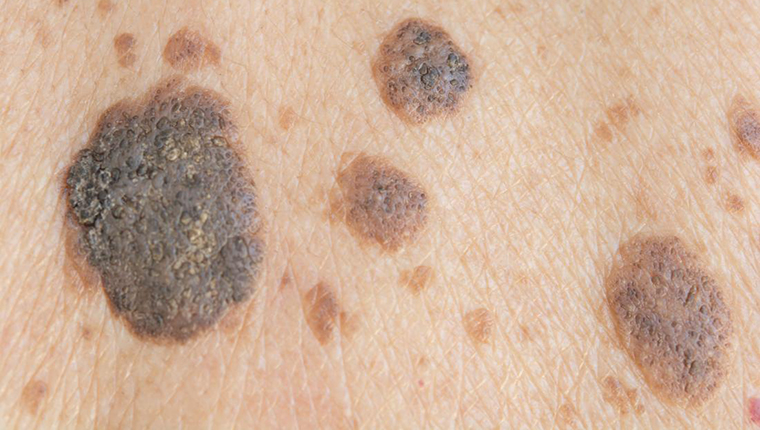Dermatology

Seborrheic keratosis
These are extremely benign skin lesions (non-cancerous), originating from cells of the outer layer of the skin (keratinocytes), are extremely common. They are often associated with hereditary disposition and occur at ages over 40 years.
Symptoms
Seborrheic keratosis usually does not present symptoms, but it can cause discomfort. The patient may feel itchy at these particular sites and these sites can rub against or get caught in clothing, thus resulting in irritation. Seborrheic keratosis is formed on the chest, back, stomach, scalp, face, neck, or other parts of the body. Seborrheic keratoses follow a circular or oval pattern, are brown or black, and their diameter reaches up to two centimeters. They are usually slightly protruding with a characteristic “sticky” appearance and scaly surface.
Treatment
The removal of seborrheic keratosis is rather an issue of aesthetics than pathology. Clinical examination and diagnosis should always be performed by a dermatologist who will suggest the most appropriate treatment depending on the case. If necessary, the dermatologist can perform a digital dermoscopy or biopsy. Treatment can be applied using cryotherapy, electrocautery, surgical resection, scraping and laser.
Frequently asked questions (FAQ)
A. Seborrheic keratoses are benign skin lesions and are not associated with cancer. However, skin cancers often resemble to seborrheic keratoses, so it is important that the clinical examination and diagnosis are carried out by a dermatologist.
A. Usually not at the same site, but in the long run, lesions may occur in other areas of the face or trunk.